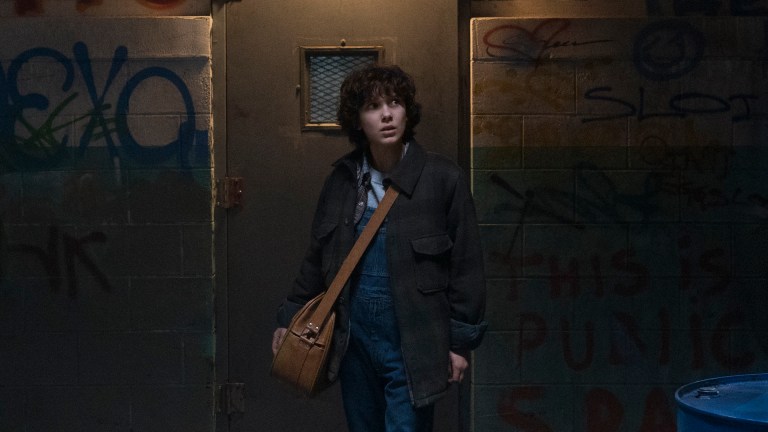Was Stranger Things’ Worst Episode Really as Bad as You Remember?
The most maligned episode of Stranger Things may have just been a victim of bad timing.

This article contains spoilers for all seasons of Stranger Things.
Stranger Things excels where other dramas falter because it always gives the audience the feeling of a continuous story. Creators The Duffer Brothers set out to elevate the medium with long-form science fiction, deep characters, and Hollywood-quality special effects. Instead of each episode representing a chunk of the season and operating standalone, Stranger Things moves like an extra-long movie. The ebb and flow of the plot is paced to perfection, blending each character’s synopsis into the other and crafting an eight-hour masterpiece.
This stylistic decision makes it harder to create “best episode” lists for the series and makes it obvious when the writers detour for a contrarian type of episode. No hour in Stranger Things is maligned like season 2’s “Chapter 7: The Lost Sister.” With a measly 6.1 rating on IMDb and plenty of nasty reviews littering the internet, this third-to-last episode of the second season became synonymous with black sheep status in the universe’s canon.
Following Eleven’s (Millie Bobby Brown) journey of self-discovery in Chicago, “The Lost Sister” tried to dig deeper into our favorite mysterious protagonist’s past by introducing new characters and giving her a richer backstory than before. Eleven develops a sisterly relationship with another Hawkins Lab victim, Kali/Eight (Linnea Berthelsen), as they aim to avenge the misdeeds of their abusers.
The overall plot and themes of the episode aren’t terrible by any means, but most fans maligned the thought process behind a bottle-style episode at a time when the Mind Flayer was wreaking havoc back in Indiana and the entire second season’s story was approaching its climax. Does this inconvenient placement of the episode make it as bad as you remember? Should fans give this side quest story another chance on rewatch?
“The Lost Sister” must be evaluated with and without context to make a declaration of its importance and viability as an hour of TV. In a vacuum, the seventh chapter of the season is solid in all aspects of production. Millie Bobby Brown performs admirably once again as the lead actress in an episode that relies completely on our relationship with her. At a time when Eleven still barely speaks, and Brown is barely even a teenager, both the character and her portrayer are remarkable.
The episode pulls back more layers of Eleven’s past to show that she’s not alone in her plight to figure out her purpose. While she stands out as a lab rat compared to the rest of the Hawkins kids, Eleven is numbered for a reason. Other kids were taken advantage of by Martin Brenner (Matthew Modine) from a young age and given no agency over their destinies. Eleven needed this conquest over her backstory to jump headfirst back into her job as Hawkins’ savior.
The Duffers do a fantastic job of relating Eleven’s trauma to the other new characters’ difficulties, especially through Eight. This young woman felt like she could have made headway as a spinoff character or even been adapted as a mentor for Eleven in later seasons, but her 15 minutes of fame serves its purpose here just the same. She contextualizes Eleven’s confusion, emotions, and misery, and it opens up Eleven’s self-confidence and actualization. The Duffers use this one-episode encounter as a catalyst for Eleven’s return to her loved ones and eventual heroics in the next two episodes, but such an odd diversion might not have been needed for this character development.
Eight’s introduction also foreshadowed One’s/Vecna’s backstory and the larger operations that happened in Hawkins Labs. We really had no idea who else Brenner used in the experiments in town besides Eleven going into season 2. Eight’s existence let us know that there were more people like Eleven out there (although her numbered designation was also a hint of at least ten other lab victims.) The episode was the first step in expanding Stranger Things into a story with an expansive timeline.
Now for that much-needed context we mentioned earlier. When placing “The Lost Sister” into the rest of the season, it still feels like kind of a big ask to expect the audience to dive into a whole new world while our tried-and-true favorites are battling lethal monsters back at home. The sixth episode left off with Steve (Joe Keery), Dustin (Gaten Matarazzo), and others fighting Demodogs and a group of Owens’ (Paul Reiser) scientists dying at the hands of the Mind Flayer, the big bad of the second season who has also completely ravaged the brain of poor Will (Noah Schnapp).
The show needed a little bit of literacy awareness here. Audiences don’t want to meet Eight right now. They don’t want Eleven to undergo a personal growth pilgrimage while her friends are about to die. The episode’s poor reputation is fairly built on its placement within the larger scheme of the proceedings. If done in the first half of the season, many fans would have been more receptive to the valid storytelling techniques that were utilized. “The Lost Sister’s” legacy will most certainly remain a mixed bag of opinions that casuals will skip, and hardcore fans will begrudgingly watch as long as they use an extra dose of patience.
All four seasons of Stranger Things are available to stream on Netflix.
